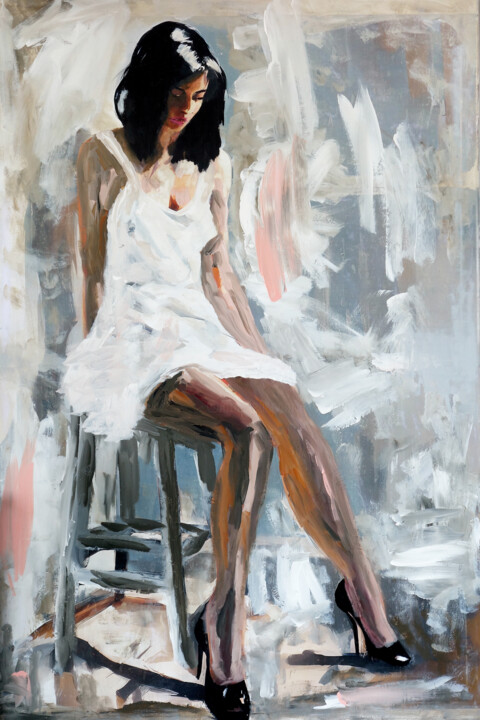通过购买选项租赁Craig Parker的作品“ Gentle Devotion ”
Craig Parker的画作可通过购买选项进行租赁
选择您的每月还款额:
索取租赁信息 "Gentle Devotion"
联系我们, 融资专家将在24小时内回复您:
常见问题
What are the advantages of leasing works of art?
- Financial Flexibility: You can enjoy exceptional, high-value works of art without a large initial investment.
- Tax Benefits: Receive potential tax benefits as rents can be deducted as a business expense.
How are the prices of monthly payments for leasing works of art set?
- The costs depend on the value of the work, the duration of the leasing contract, and any services included such as installation.
Can we buy the work after the leasing period?
- Yes, on ArtMajeur leasing contracts offer a purchase option at the end of the contract, allowing customers to acquire the work at a determined price (residual value).
How are the safety and insurance of works managed?
- Insurance during the duration of the rental contract is the responsibility of the customer. It is therefore important to check the details of your insurance contract to be sure that your leased works are covered in the event of damage.
What are the conditions for terminating the leasing contract before its end?
- Unless there are specific conditions, leasing contracts for works of art commit the client to payment of the entire price of the work; payments are therefore due until the end of the lease.

关于作者
克雷格·帕克(Craig Parker)是一位德裔美國職業攝影師,具有極高的美學和藝術水準。他越來越多地將自己多年的美容和時尚攝影經驗運用到藝術領域。克雷格·帕克(Craig Parker) 偉大的美術照片講述了來自魅力世界的故事,但也講述了奇怪的人、地點和過去的時代,這些故事看起來異常熟悉,但同時又令人驚訝地陌生。 「我正在尋找日常生活中的性感,」克雷格談到他的方法時說,這種方法似乎將白日夢與現實融為一體。秉承赫爾穆特·牛頓(Helmut Newton) 或彼得·林德伯格(Peter Lindbergh) 等著名色情和時尚攝影師以及美國《生活》雜誌等標誌性媒體的傳統,克雷格·帕克(Craig Parker) 再現了過去幾十年的風采。他喜歡使用類比攝影的風格裝置來設計自己的作品,他知道如何使用數位技術(包括人工智慧)將其提煉成偉大的攝影藝術作品。
Kè léi gé·pàkè (Craig Parker) shì yī wèi dé yì měiguó zhíyè shèyǐng shī, jùyǒu jí gāo dì měixué hé yìshù shuǐzhǔn. Tā yuè lái yuè duō de jiāng zìjǐ duōnián dì měiróng hé shíshàng shèyǐng jīngyàn yùnyòng dào yìshù lǐngyù. Kè léi gé·pàkè (Craig Parker) wěidà dì měishù zhàopiàn jiǎngshùle láizì mèilì shìjiè de gùshì, dàn yě jiǎngshùle qíguài de rén, dìdiǎn hé guòqù de shídài, zhèxiē gùshì kàn qǐlái yìcháng shúxī, dàn tóngshí yòu lìng rén jīngyà de mòshēng. `Wǒ zhèngzài xúnzhǎo rìcháng shēnghuó zhōng dì xìnggǎn,'kè léi gé tán dào tā de fāngfǎ shí shuō, zhè zhǒng fāngfǎ sìhū jiāng bái rì mèng yǔ xiànshí róng wéi yītǐ. Bǐngchéng hè ěr mù tè·niúdùn (Helmut Newton) huò bǐdé·líndébó gé (Peter Lindbergh) děng zhùmíng sèqíng hé shíshàng shèyǐng shī yǐjí měiguó “shēnghuó” zázhì děng biāozhì xìng méitǐ de chuántǒng, kè léi gé·pàkè (Craig Parker) zàixiànle guòqù jǐ shí nián de fēngcǎi. Tā xǐhuān shǐyòng lèibǐ shèyǐng de fēnggé zhuāngzhì lái shèjì zìjǐ de zuòpǐn, tā zhīdào rúhé shǐyòng shùwèi jìshù (bāokuò réngōng zhìhuì) jiāng qí tíliàn chéng wěidà de shèyǐng yìshù zuòpǐn.






